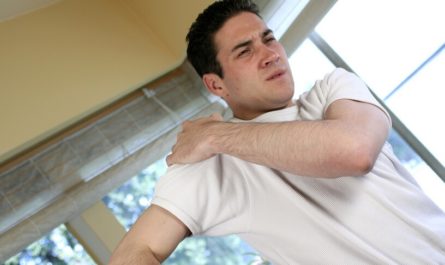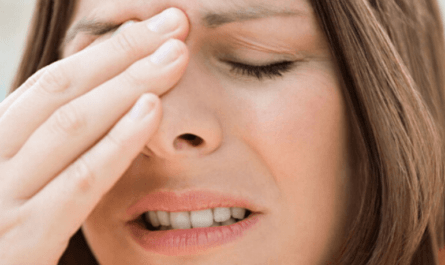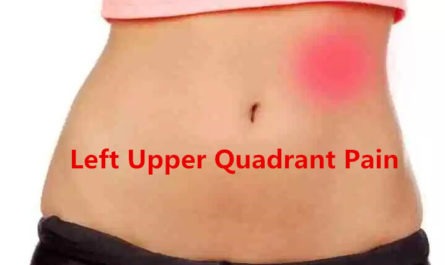Upper arm pain is usually described as pain, discomfort, or ache on your upper arm (your shoulders down to your elbow). There are numerous reasons why a person can experience this condition. The most common cause of arm pain is injury or trauma, including joint dislocations, bone fractures, muscle sprains, and strains.
The good news is – Upper arm pain is usually not something to worry about. It might be a simple case of muscle overuse. However, in rare instances, unexplained pain in your upper arm could signal a life-threatening condition, such as myocardial infarction (heart attack) and angina pectoris. This article will discuss 12 common causes of upper arm pain with treatment.

Symptoms that accompany upper arm pain
The usual symptoms that occur with arm pain include:
- Arm redness
- Numbness
- Swelling
- Swollen lymph glands under the arm
- Stiffness
- Redness or bruising
- Tingling
- Weakness
- Stiffness
- Tenderness
- Limited range of motion
If your upper arm pain is a symptom of a heart attack, you may notice other symptoms, including:
- Chest pain
- Difficulty breathing
- Nausea
12 Common Causes of Upper Arm Pain with Treatment
1. Muscle Strain
Muscle strain is a prevalent cause of upper arm pain. It occurs when the muscles in the arm are stretched or torn due to overexertion, sudden movements, or repetitive motions.
Treatment
- Rest the affected arm and avoid activities that exacerbate the pain.
- Apply ice packs to reduce inflammation and swelling.
- Use over-the-counter pain relievers, such as ibuprofen or acetaminophen, to alleviate discomfort.
- Engage in gentle stretching and strengthening exercises to promote healing.
2. Tendinitis
Tendinitis, also known as tendonitis, is the inflammation of tendons in the upper arm. It commonly affects the biceps and can cause localized pain and discomfort.
Treatment
- Apply cold compresses to the affected area to reduce inflammation.
- Avoid activities that put a strain on the arm and worsen the pain.
- Use over-the-counter nonsteroidal anti-inflammatory drugs (NSAIDs) to manage pain and reduce inflammation.
- Physical therapy exercises and stretches may be recommended to promote healing and improve mobility.
3. Rotator Cuff Injury
A rotator cuff injury is a common cause of upper arm pain, especially in individuals who engage in repetitive overhead motions. It refers to the damage or tearing of the tendons and muscles in the shoulder joint.
Treatment
- Rest the affected arm and avoid activities that aggravate the pain.
- Apply ice packs to reduce swelling and inflammation.
- Take over-the-counter pain medication to manage discomfort.
- Physical therapy, including exercises and stretches, is often recommended to restore strength and mobility.
4. Shoulder Impingement Syndrome
Shoulder impingement syndrome occurs when the tendons and bursa in the shoulder become compressed, leading to pain and restricted movement.
Treatment
- Rest the affected arm and avoid activities that exacerbate the pain.
- Apply ice packs to reduce swelling and inflammation.
- Nonsteroidal anti-inflammatory drugs (NSAIDs) can help manage pain and inflammation.
- Physical therapy may be prescribed to improve shoulder mechanics and strengthen supporting muscles.
5. Frozen Shoulder
Frozen shoulder, also known as adhesive capsulitis, is characterized by stiffness, pain, and limited range of motion in the shoulder joint.
Treatment
- Physical therapy with stretching and range of motion exercises is often recommended.
- Pain medication and anti-inflammatory drugs can help alleviate symptoms.
- Corticosteroid injections may be administered to reduce inflammation and pain.
- In severe cases, surgical intervention may be necessary to release the tightened capsule.
6. Fracture
A fracture, or broken bone, can cause intense upper arm pain. It typically occurs as a result of trauma or injury.
Treatment
- Immobilization of the affected arm using a cast or splint is necessary for proper healing.
- Pain management with over-the-counter or prescribed medication may be required.
- In some cases, surgery may be necessary to realign and stabilize the fractured bone.
7. Bursitis
Bursitis is the inflammation of the bursae, which are small sacs filled with fluid that cushion the joints. It can cause pain and tenderness in the upper arm.
Treatment
- Rest the affected arm and avoid activities that worsen the pain.
- Apply ice packs to reduce inflammation and swelling.
- Nonsteroidal anti-inflammatory drugs (NSAIDs) can help manage pain and inflammation.
- Physical therapy may be recommended to improve flexibility and strength.
8. Osteoarthritis
Osteoarthritis is a degenerative joint disease that can affect the shoulder and cause upper arm pain. It occurs when the protective cartilage in the joints wears down over time.
Treatment
- Nonsteroidal anti-inflammatory drugs (NSAIDs) can help alleviate pain and reduce inflammation.
- Physical therapy exercises can improve joint mobility and strengthen surrounding muscles.
- In some cases, corticosteroid injections may be administered to reduce pain and inflammation.
- Severe cases may require surgical intervention, such as joint replacement.
9. Rheumatoid Arthritis
Rheumatoid arthritis is an autoimmune disease that causes chronic inflammation in the joints, including the shoulder joint.
Treatment
- Medications like disease-modifying antirheumatic drugs (DMARDs) can help manage pain and reduce inflammation.
- Physical therapy exercises and stretches can improve joint mobility and function.
- Surgery may be recommended in severe cases to repair or replace damaged joints.
10. Nerve Impingement
Nerve impingement occurs when a nerve in the upper arm becomes compressed or irritated, leading to pain, numbness, and tingling sensations.
Treatment
- Resting the affected arm and avoiding activities that exacerbate the pain.
- Physical therapy exercises and stretches can help relieve nerve compression.
- Pain medication and anti-inflammatory drugs may be prescribed to manage symptoms.
- Surgical intervention may sometimes be necessary to decompress the affected nerve.
11. Heart Attack
A heart attack can cause referred pain to the upper arm. It occurs when the blood flow to the heart is blocked, leading to damage to the heart muscle.
Treatment
- Immediate medical attention is necessary in the event of a suspected heart attack.
- Treatment may include medications, lifestyle changes, and, in severe cases, surgical interventions.
- Cardiac rehabilitation programs are often recommended to improve heart health and prevent future episodes.
12. Cervical Radiculopathy
Cervical radiculopathy is the compression or irritation of nerve roots in the cervical spine, which can cause upper arm pain.
Treatment
- Resting the affected arm and avoiding activities that exacerbate the pain.
- Physical therapy exercises and stretches can help alleviate nerve compression.
- Pain medication and anti-inflammatory drugs may be prescribed.
- In some cases, surgery may be necessary to decompress the affected nerve roots.
FAQs
1. Can poor posture cause upper arm pain?
Poor posture can lead to muscle imbalances and strain, resulting in upper arm pain. Maintaining good posture and practicing proper ergonomics can help prevent this.
2. Are there any home remedies for relieving upper arm pain?
Applying ice packs, performing gentle stretches, and taking over-the-counter pain medication are home remedies that can provide temporary relief. However, it’s essential to consult a healthcare professional for a proper diagnosis and treatment plan.
3. When should I seek medical attention for upper arm pain?
If the pain is severe, persistent, accompanied by other concerning symptoms such as chest pain or difficulty breathing, or if it significantly affects daily activities, it is recommended to seek medical attention promptly.
4. How long does it take for upper arm pain to heal?
The healing time for upper arm pain varies depending on the underlying cause and individual factors. Mild cases may resolve within a few days to weeks, while more severe conditions may require several weeks or months of treatment and rehabilitation.
5. How to Prevent Upper Arm Pain?
You must know how to prevent arm pain to reduce the risk of severe damage.
Avoid repetitive movements: If your job requires repetitive movements like throwing a baseball, typing, or operating a cash register, reduce the force of exertion or find exercises to correct the unnatural movement.
Relax your grip: Gripping too hard can trigger upper arm pain. You can relax the grasp on your pen, handle, or anything else.
Take breaks: You must take plenty of breaks to prevent upper arm pain and severe injury. You can use the time to stretch and bend your hands and wrists.
Watch your form and posture: Proper posture can prevent pain. Make sure you don’t bend your arms too far in either direction.
Mix up your exercise: Repeating an activity like swimming over and over can cause pain in the upper arm. To prevent this, you can try various exercises to avoid upper arm injury.
Stretch before exercise: Stretching before and after workouts will make you less likely to have an upper arm injury. You can build your range of motion once your muscles are warmed up.






